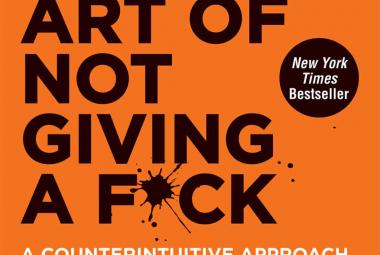In their book Crucial Conversations, Pattersson, Grenny, McMillan and Switzler describe seven steps to improve the conversations we have that matter most. Crucial conversations are called as such, because these are the conversations that determine our future and the future of the people around us. They are therefore more than the conversations that are uncomfortable, frustrating or challenging.
After a short introduction to crucial conversations, this article will shortly address each of the seven steps described in the book to have a successful crucial conversation.
The first question the authors answer is why crucial conversations are important. And the answer is as follows. In projects, daily management or even at home, many people and teams take decisions that lead to undesirable results in the long term. This per ce would not be a problem, apart from the fact that research shows that 84% of people have seen these kind of problems coming on a regular basis, but failed to address their concern at the moment the decision was taken.
We see people take short cuts all the time, benefiting the short term instead of the long term, for many different reasons and even though we know it is wrong, we fail to address this concern and rather keep quiet. How can we teach ourselves to be able to talk to the people when we see them taking a short cut?
The first step in preparing yourself for a crucial conversation is to be both 100% honest and 100% respectful. The authors call this starting from the heart. In the preparation for the talk, you need to have a clear view on what you would like to achieve for yourself, the person that you would like to talk to and the relationship that the two of you have together. This will help you steer the behavior that you will show during the big talk.
After you have thought about your behavior in which you are open for a respectful conversation, you can focus on the rest of the people that are involved in the conversation. The second step is to learn how to recognize unsafe situations. These are situations in which a person does not feel comfortable to express him or herself to you or in a group, possibly withholding an opinion or a piece of information that can prevent a wrong decision from being taken.
Feeling unsafe can result in two things: violent behavior, or silence. Both should be interpreted in the broader sense of the word. Silence in this case means that you are not adding value to the ´pool of meaning´ which also includes being sarcastic, in denial, or twisting the facts. You are talking, but not adding meaning, which is the same as if you would have just said nothing at all.
The logical next step that follows is about creating safety in the group. When you are able to recognize that people feel unsafe in the group, you can try to help them make them feel safe so that they will express their opinion. You can do this by emphasizing your common goals and interests, which shows how much you respect the other person. It becomes easier to find your common goals and interest when you understand where another person is coming from. Why is he or she acting in a particular way? What is it that is important to them? What common ground can you find? Try to ask questions from that common ground.
Step four in having a crucial conversation is to explain where your standpoint comes from. The authors define this as defining your story. With the way you tell your story and prepare it, you can actually manage the emotions you show during the talk, which can help you make sure you take a cooperative attitude during the actual talk.
Three types of stories you would like to avoid are: victim-stories (it is not my fault, I did the right thing but it went wrong anyway), villain-stories (it was your fault! You got is unto this situation.) and helplessness-stories (people like you don´t take feedback anyway, so of course I didn’t speak up).
After defining your story as a preparation step, you can tell your story and ask others about their stories. Base your story on facts and avoid interpretations and blaming. Tell what you have seen, heard or read that have made you step up and have this crucial conversation. After you have shared your reasons for speaking up, ask other to share theirs. “I am very curious to hear your side of the story; would you like to share it with us?”
Step number 6 is listening and understanding where the other person is coming from. You do this by asking questions, mirroring and repeating what you have heard to make sure you understand well. Again, remember to stick to the facts and make sure you don’t react violently or insecure. It is okay to be direct in a crucial conversation and say things like: “It is my opinion that…” and “Maybe you are not aware of the fact that…” These are a good start of a sentence that you can use to make your standpoint clear.
Finally, step seven, is about taking action. Just having a discussion without a clear action plan makes the whole exercise kind of useless, and a waste of energy. Therefore: decide together how you are going to define the next steps and then define these steps.
A good talk can lead to relief and an improved (working) relationship, but if we want to make the world a better place every day, we need to follow up on these actions to make sure the same problem does not reappear.
Crucial Conversations is a great book, with many examples on how each of the in this article described seven steps are put to practice. If more people in the world would have these important talks in their life, in a way that does not lead to a violent or silent reaction from the person that receives the feedback, we can reduce mistakes, accidents, costs and stress. Who would not be interested in that?
Continue to:
Deep Work - C.Newport (summary)
SOURCE:
Patterson, K., Grenny, J., McMillan, R., Switzler, A., 2012, Crucial Conversations – Tools for Talking When Stakes Are High, New York: McGraw Hill (order this book)















